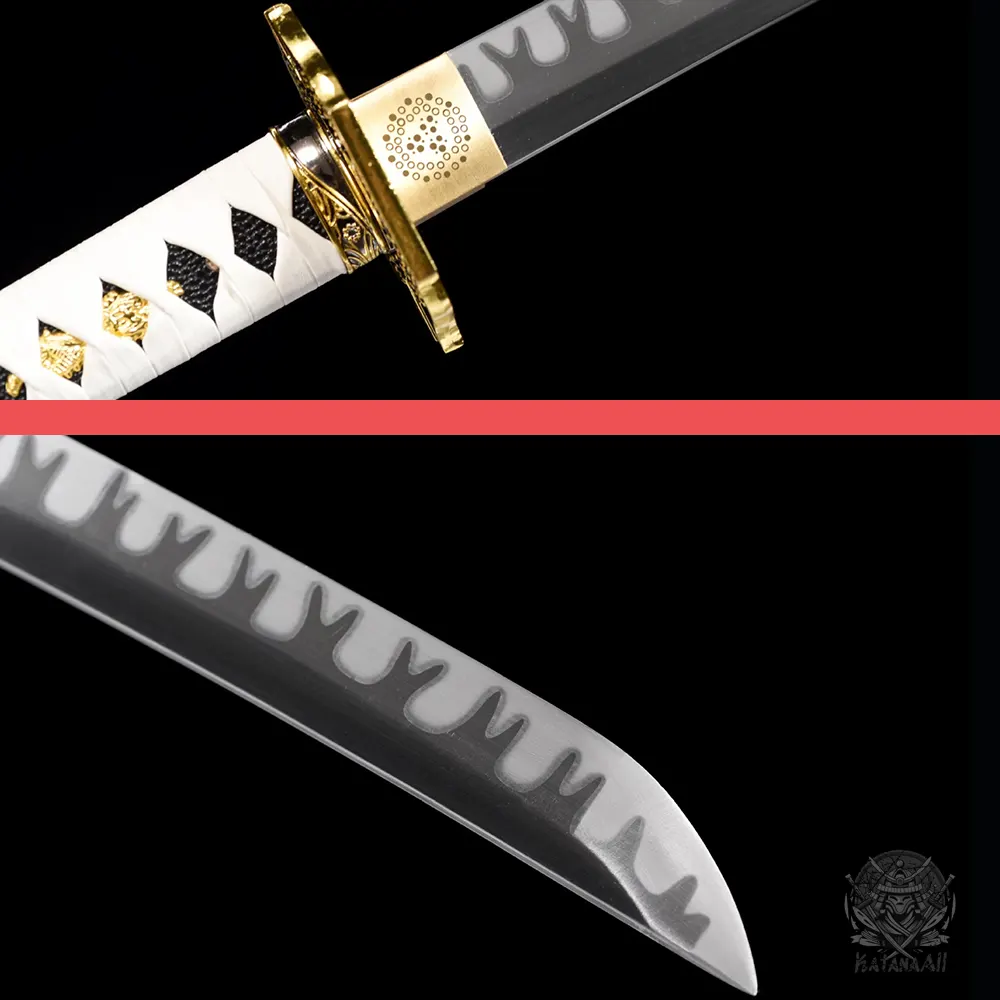
The katana, a traditional Japanese sword, is celebrated worldwide for its razor-sharp edge and remarkable flexibility. These qualities make the katana an icon of superior craftsmanship and functionality. But what exactly contributes to the katana’s unique combination of sharpness and flexibility? This article delves into the science, art, and traditions behind the forging of a katana, exploring the elements that define its legendary properties.
1. The Duality of Steel
A katana’s sharpness and flexibility originate from its construction using two types of steel: high-carbon steel and low-carbon steel.
- High-Carbon Steel: This steel forms the outer edge of the blade, providing the katana with its renowned sharpness. High-carbon steel is hard, enabling the blade to retain a razor-like edge for cutting precision.
- Low-Carbon Steel: Used for the core, low-carbon steel is softer and more flexible, allowing the blade to absorb shocks without breaking.
This combination, known as the sanmai (three-layer) or kobuse (wrapped steel) construction technique, results in a blade that is both hard enough to cut and resilient enough to withstand stress during use.
2. Differential Hardening
The katana’s hallmark sharpness and flexibility are also achieved through a process called differential hardening, a heat-treatment technique that creates distinct zones of hardness along the blade.
- During forging, the blade is coated with a clay mixture: a thicker layer covers the spine, while a thinner layer is applied to the cutting edge.
- When the blade is heated and quenched in water, the thinner edge cools rapidly, becoming extremely hard, while the thicker spine cools more slowly, retaining its flexibility.
This process creates the hamon, a visible wavy pattern along the blade, which not only adds aesthetic beauty but also signifies the blade’s functional properties.
3. Expert Hammering and Folding
Traditional katana forging involves repeated folding and hammering of the steel, which eliminates impurities and aligns the metal’s grain structure for maximum strength and flexibility.
- The folding process can be repeated hundreds of times, creating layers that enhance the blade’s durability and resistance to cracking.
- Hammering ensures even distribution of carbon throughout the steel, balancing hardness and ductility.
The result is a blade that can deliver powerful cuts without compromising its structural integrity.
4. The Sharp Edge: Honing and Polishing
After forging, the katana undergoes a meticulous sharpening and polishing process performed by a skilled togishi (polisher).
- Polishing with progressively finer stones creates a mirror-like finish and refines the cutting edge to razor sharpness.
- This stage also accentuates the hamon, showcasing the blade’s craftsmanship and differential hardening.
The precise geometry of the blade, including its curvature and edge angle, further enhances its sharpness and cutting efficiency.
5. Curvature and Cutting Efficiency
The katana’s iconic curve, or sori, is not merely for aesthetics; it plays a crucial role in the blade’s functionality.
- The curve is created naturally during the quenching process as the edge contracts more than the spine.
- This curvature improves the katana’s slicing capability, allowing it to cut cleanly through targets with minimal resistance.
The combination of a curved shape and a keen edge gives the katana unmatched cutting performance while preserving its structural flexibility.
6. Traditional Craftsmanship Meets Modern Techniques
While traditional methods remain the cornerstone of katana production, some modern smiths incorporate advanced materials and technology to enhance sharpness and flexibility.
- Powdered steel and contemporary heat treatments can achieve similar results to traditional folding and differential hardening, offering alternatives for modern enthusiasts.
- Despite these innovations, traditional forging remains irreplaceable for its cultural and artistic value.
Conclusion
The katana’s sharpness and flexibility result from centuries of meticulous craftsmanship and innovation. By combining dual steel types, differential hardening, expert forging, and precise polishing, swordsmiths create a blade that embodies both beauty and function.
These qualities are not just technical achievements; they represent the dedication and artistry of the Japanese sword-making tradition. Whether admired as a work of art or valued for its performance, the katana remains a symbol of perfection in blade-making, proving that sharpness and flexibility are the hallmarks of its enduring legacy.
